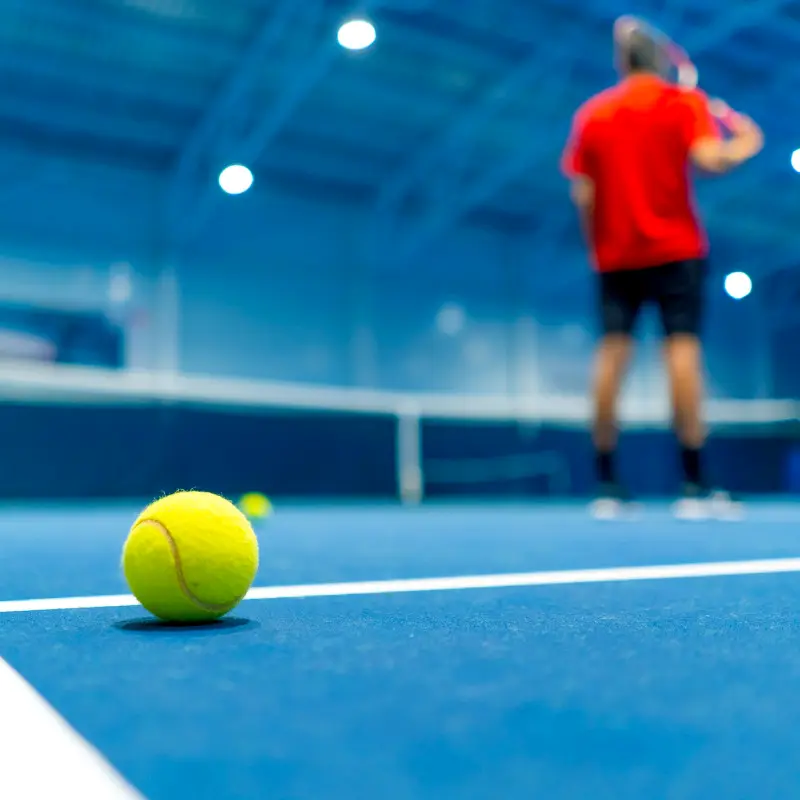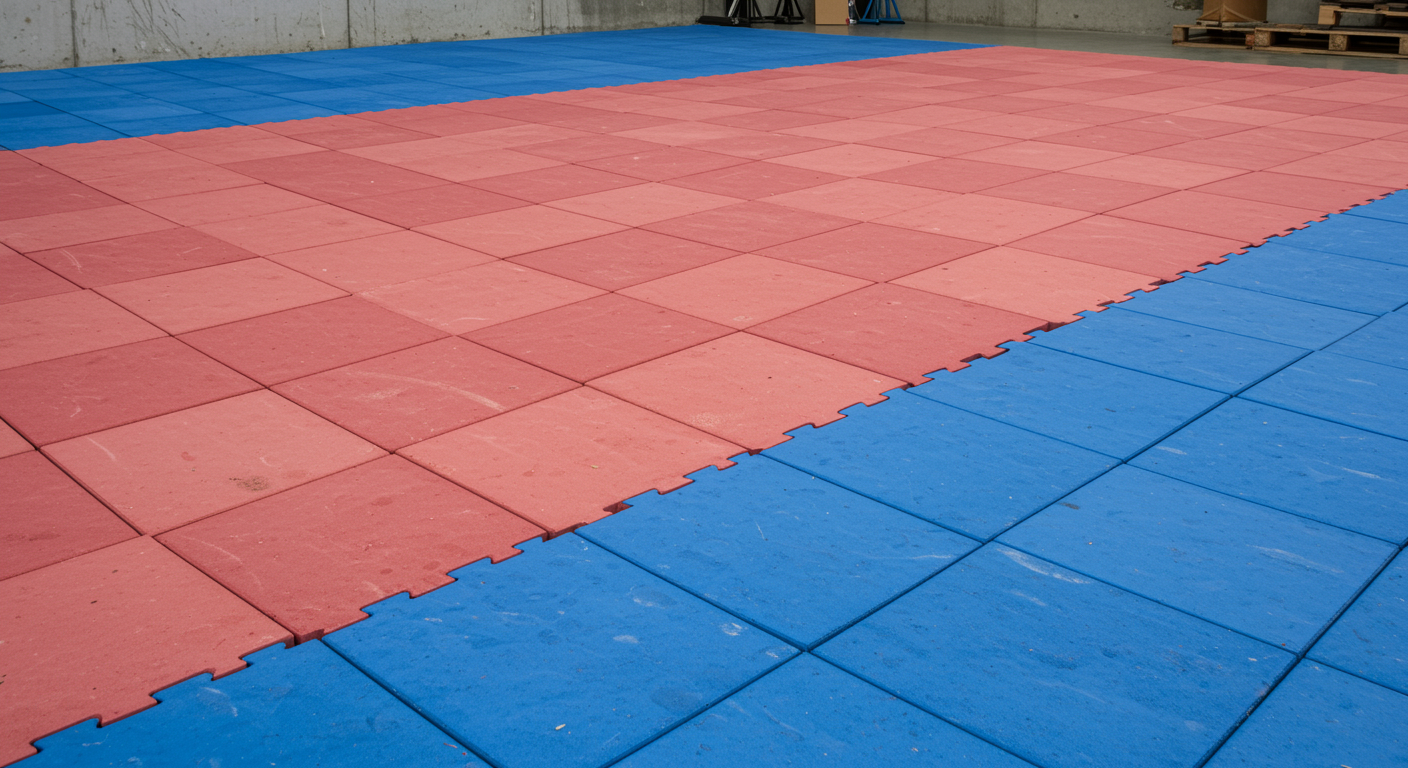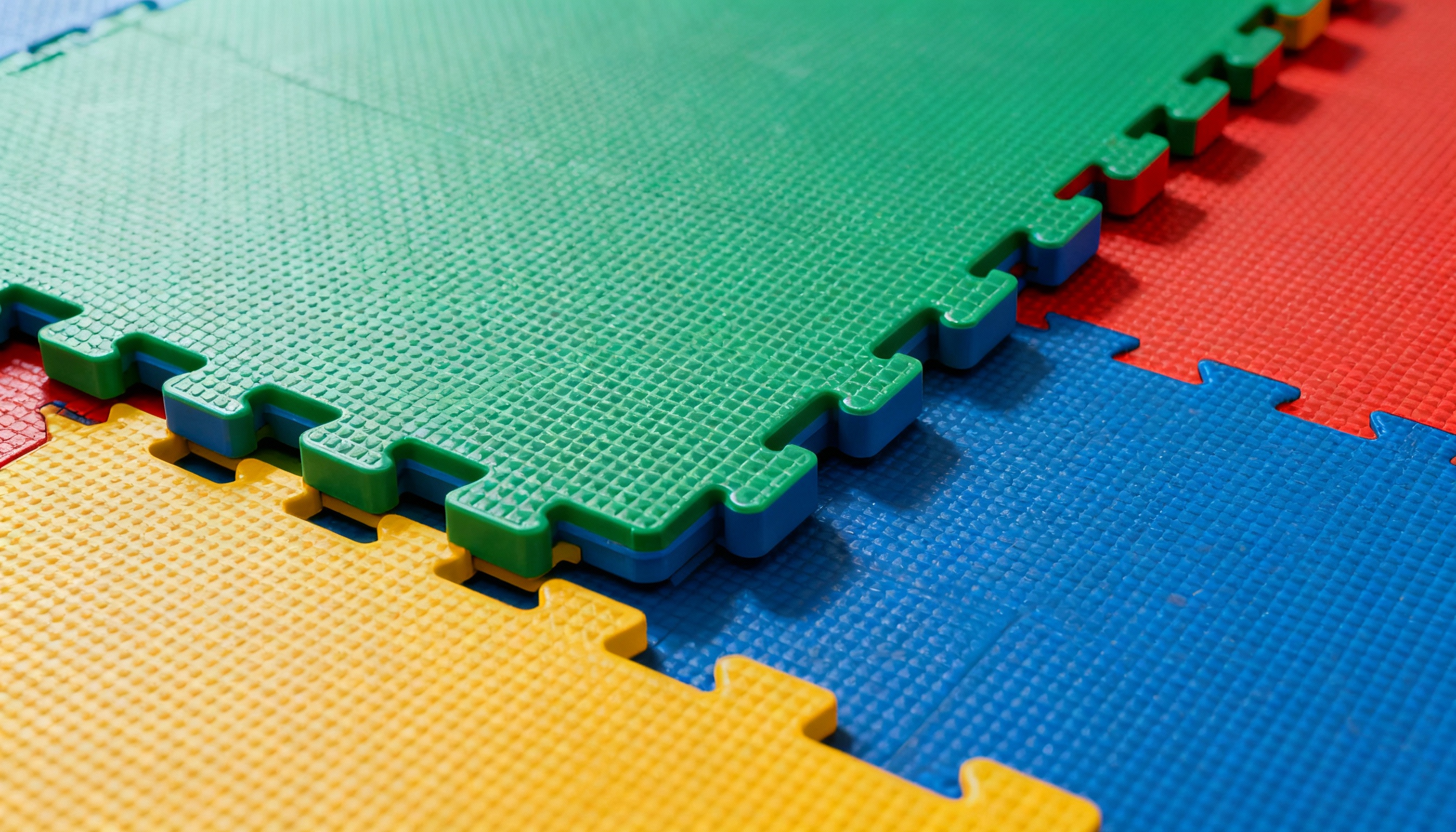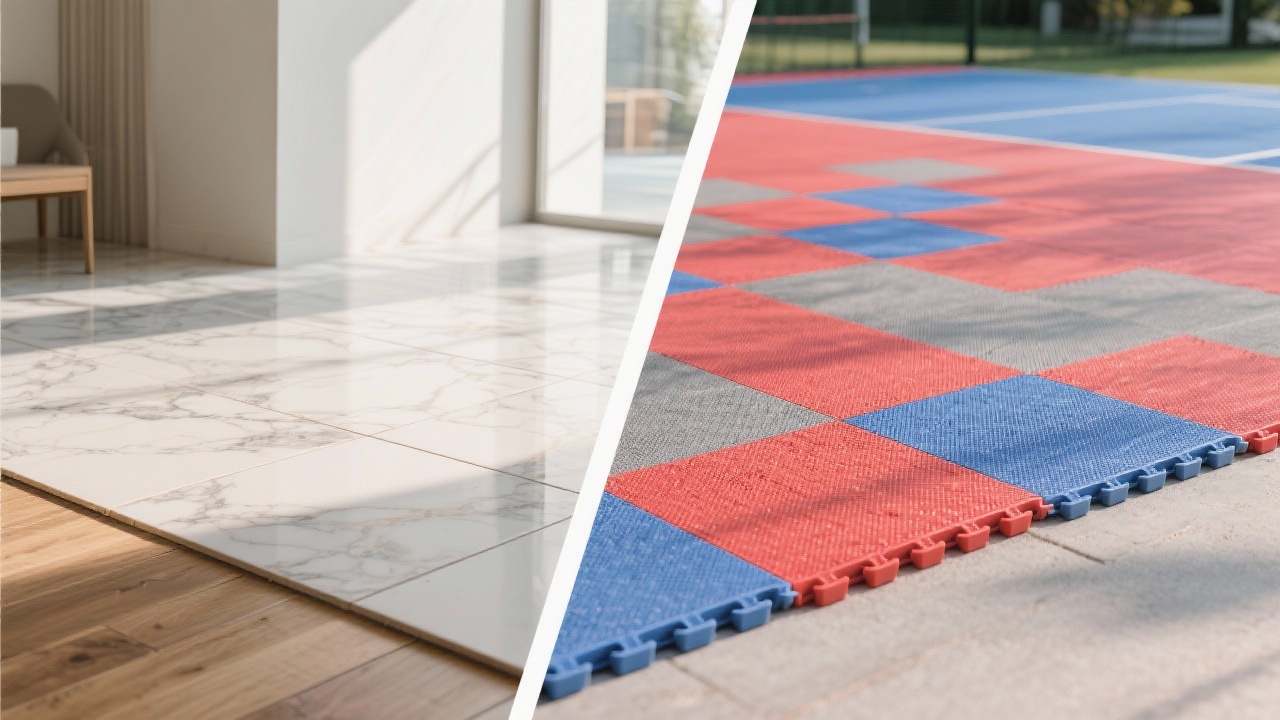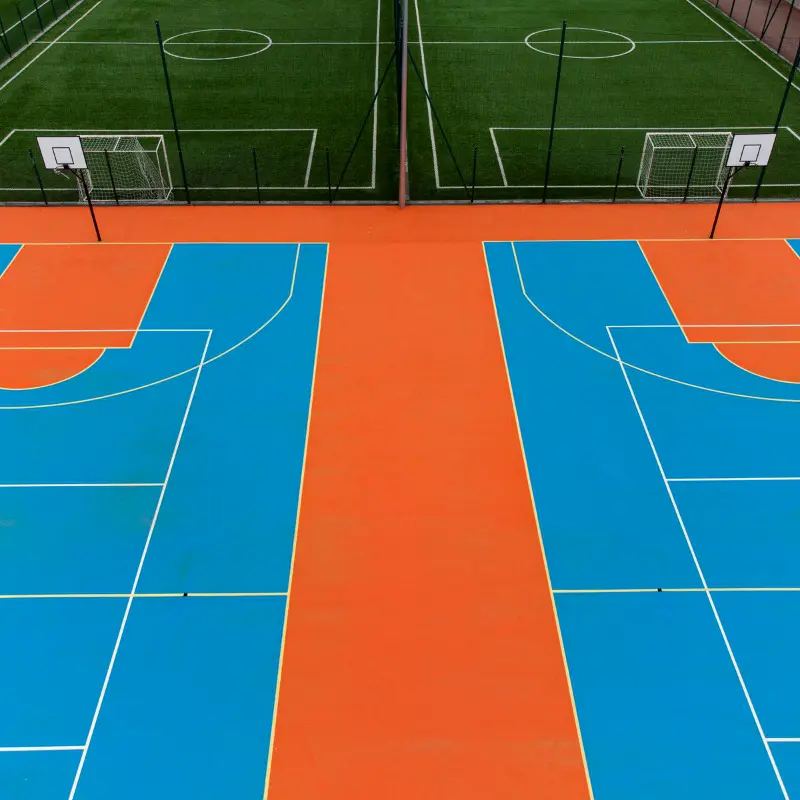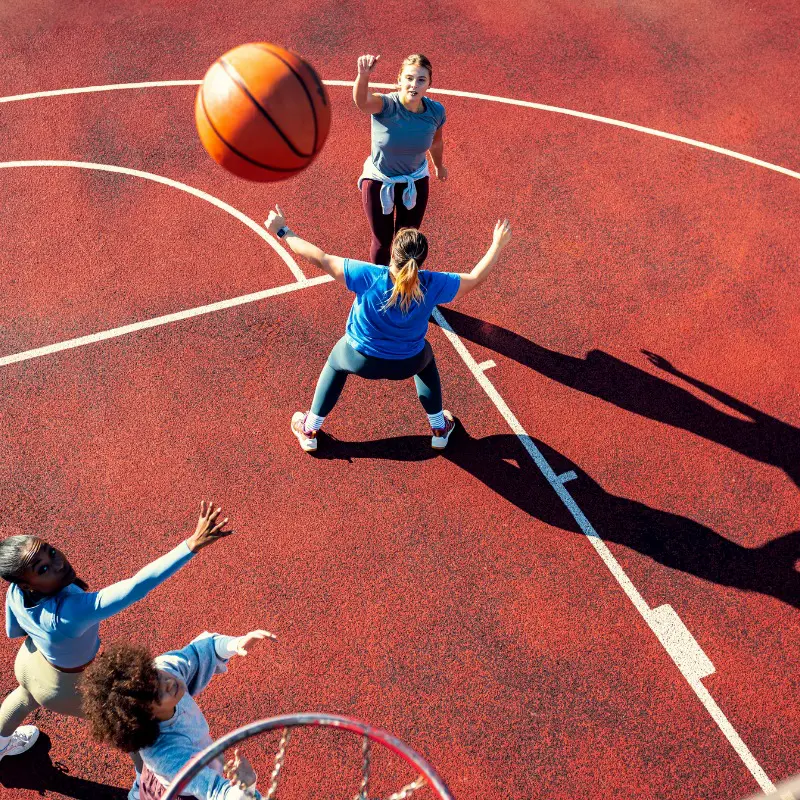How PP Tiles Save Time and Money on Court Builds: A Smarter Surface Solution
Building a sports court—whether for school, club, recreation centre, or for community use—is no small task. Traditional surfaces like concrete, acrylic or asphalt can take weeks or months from ground prep to final usable form. But what if there were a solution that slashes build time, cuts lifetime costs, and still delivers excellent performance and durability? That’s where PP tiles (polypropylene interlocking tiles) shine.
In this article, we’ll walk you through what PP tiles are, how they save time and money, when they make sense — and help you decide if they’re right for your court project.
What Are PP Tiles?
PP tiles are modular, snap together flooring panels made of polypropylene, a durable thermoplastic polymer.
Key features:
- Snap lock / tongue and groove assembly :- It does not require adhesives or glue, making it less complicated.
- Weatherproof, UV resistant, material :- The material can withstand sun, rain, change of temperature.
- Shock absorbing and grip :- Safer to players, not much risk of slips, joints etc.
- Adjustable and lightweight :- Colour, line markings, portable parts, re-usable.
How PP Tiles Save Time on Court Construction
Fast Installation
One of the biggest advantages of PP tiles is speed. Because they interlock, you don’t need adhesives to cure, no complex layering, no long waiting periods. You lay them on a properly prepared flat base, lock them together, and you’re done. Many installations can be completed in hours rather than days.
For example, a small school court could be installed in a one‑day turnaround, compared to concrete which might require several days of pouring, curing, sanding, and painting. The Interlocking Sports Flooring mechanism lets contractors work quickly and reduce labour time.
Reduced Downtime
Traditional surfaces often mean long downtime: waiting for concrete to cure, paint to dry, sealants to set. PP tile courts, by contrast, are often playable within hours of installation. Especially useful if you need the court ready for tournaments, seasonal use, or temporary event courts. Less waiting, more use.
Weather Resilience
The external sports courts are subject to weather conditions: rainy season, puddles, UV rays, heat. The drainage systems of many PP tiles are built in so the water could pass through or drain rapidly and play could be resumed soon after it rained. The tiles are UV stabilised or UV resistant polypropylene that does not fade or turn brittle in the scorching sun.
So weather‑related delays are minimized.
Portability & Reusability
Since the PP tiles are snapping, you can take them apart and put them back together. Should you change venue, relocate a court, or create temporary courts (pop ups or events), the modular systems enable you to change parts of the court instead of creating everything anew. The flexibility will contribute to a saving of time and minimize waste.
How PP Tiles Save You Money (Both Now and Long‑Term)
Lower Installation Costs
Since the installation is simpler (snap together, no adhesives, fewer finishing materials), you need less specialised labour, fewer tools, and less preparatory work. The less skilled labour required, the lower your upfront labour cost. The base still needs to be reasonably flat (e.g. compacted soil or concrete slab), but even that preparation is usually less elaborate than for acrylic or poured concrete plus coatings.
Minimal Maintenance
One of the biggest long‑term cost burdens of traditional court surfaces is maintenance: repainting lines, resurfacing worn spots, fixing cracks, treating peeling layers, etc. PP Tiles are resistant to peeling, fading, cracking. Cleaning is typically just pressure washing or sweeping; no resurfacing or repainting needed except sometimes for the line markings.
Lower maintenance means lower ongoing costs.
Easy, Affordable Repairs
If one or more tiles are damaged — say by heavy impact, a tree fall, wear in a particular spot — you don’t need to resurface or replace large areas. You just replace the individual tiles. Stock a few spare tiles and you can make repairs quickly and cheaply. This “modular repair” approach vastly reduces replacement costs over time.
Long Lifespan = Long‑Term Value
When you buy good quality PP tiles—UV‑stable, with proper drainage and material grade—you can expect many years of reliable service. For many installations, 8‑10 years or more. Over that period, the annualised cost (purchase + installation + maintenance + repairs) becomes far lower than for concrete or acrylic surfaces which often need resurfacing every few years.
Also, PP tiles offer good return on investment (ROI): you spend more up‑front on material compared to some low‑end surfaces, but you recoup that via durability and lower recurring maintenance.
Real‑World Examples / Case Studies
Let’s look at some concrete cases and numbers to illustrate.
Case Study A:
A community basketball court (25 m × 15 m ≈ 375 m²) was built using Interlocking PP Tiles. Installation took 2 full‑day sessions with a crew of 5 people. Compared to a similar concrete + acrylic court that requires 3 weeks including curing and painting, this method saved ~80% of labour time.
Cost Comparison:
• Traditional concrete + acrylic: material + labour + finishing = ₹1,200,000
• PP tiles: material + simpler labour + base prep = ₹700,000
• Maintenance over 5 years saved ~₹150,000 due to minimal repairs and no repainting.
Case Study B:
A multi‑sport outdoor court for a school installed 600 Interlocking PP Sports Tiles. Because of the good drainage, after heavy rain there was only ~1 hour delay; a concrete court of similar size in that climate would need 6‑8 hours or more to dry.
These examples show what savings in time and money really look like in practice.
Performance & Safety Benefits (Bonus!)
Time and cost aren’t everything. A court has to be usable, safe, and perform well.
- Shock Absorption & Grip: Many PP tiles have flexible centres or dual‑layer construction giving cushion against impact, protecting joints, knees and ankles. Anti‑skid surface finishes help reduce slipping.
- Safe Play in Various Conditions: Slip resistance even when wet; temperature resilience (not getting overly hot in sun or brittle in cold).
- Customisation: You can choose colour combinations, line markings built in or applied, edge trims, corner pieces, etc. Branding, court markings for multiple sports, etc.
- Compliance & Standards: For professional or semi‑professional courts, ensure tiles meet relevant standards for bounce, shock absorption, ball rebound, etc.
Conclusion: The Smarter Way to Build a Court
When you factor in both the time and money, PP tiles (Polypropylene Interlocking Sports Tiles, modular court surface) are increasingly proving to be a superior option for many court builds. They:
- Drastically reduce installation time and downtime
- Lower labour and material costs upfront
- Offer long‑term savings via minimal maintenance, simple repairs, and durability
- Deliver safety, performance, customization, and environmental benefits too
Ready To Transform Your Sports Court Project?
Contact us today for a free site assessment or quote. See how fast, cost‑effective, and durable your next court build can be—with PP Tiles, you build smarter, not harder.
FAQ (Bonus)
Q: Are PP tiles waterproof?
A: They’re not completely “waterproof” in the sense of never letting water through—many have drainage gaps or channels. But they resist water damage, puddling, and weather much better than many traditional coatings.
Q: Can I install PP tiles myself?
A: If the base surface is flat and proper, yes — many modular systems are DIY‑friendly. But for larger courts or commercial setups, hiring professionals ensures proper base prep and alignment.
Q: How long do high‑quality PP court tiles last?
A: Usually 8‑10 years or more with UV‑stable materials and proper maintenance. Some premium tiles may last even longer in mild conditions.

